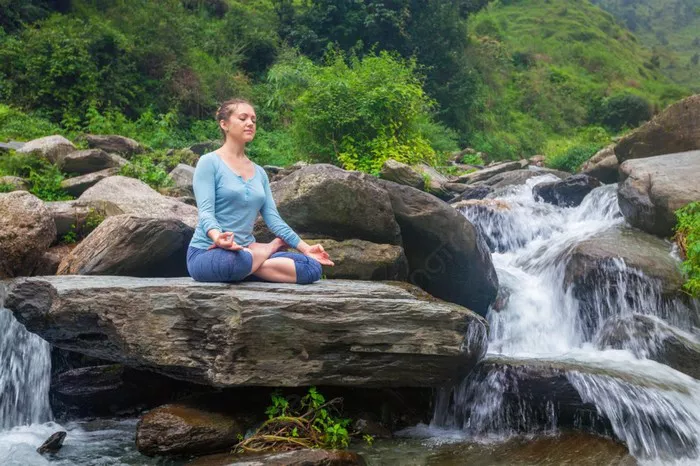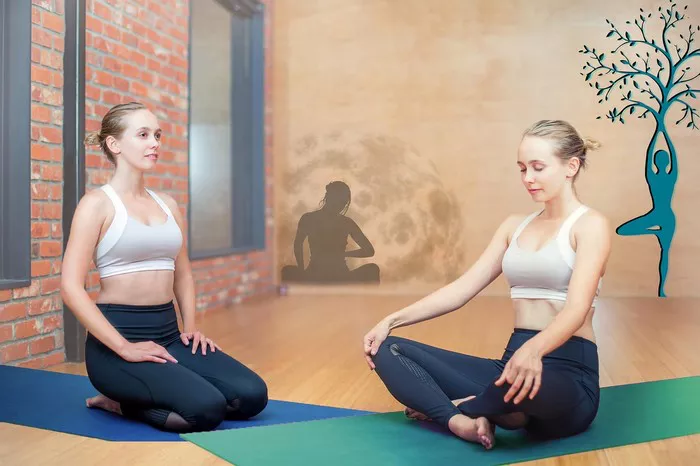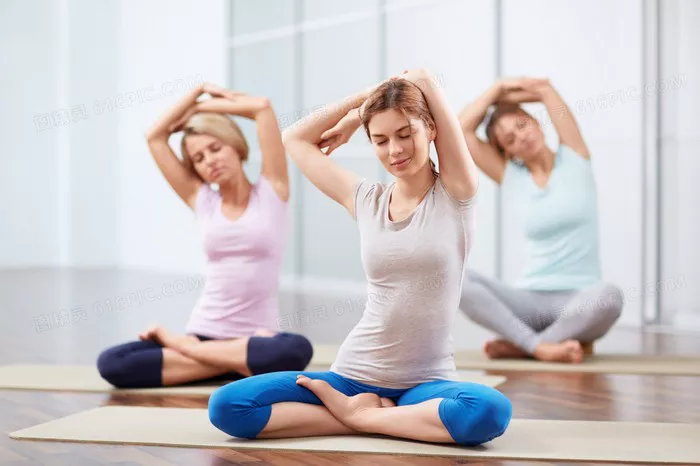Embarking on the Isha Hatha Yoga Training Odyssey is like setting sail on a profound journey of self – exploration. This ancient practice, steeped in rich tradition, offers a holistic path to well – being. Before delving into the intricate postures, breathwork, and meditative techniques, it’s crucial to lay a solid foundation. The pre – training phase acts as the cornerstone, ensuring that both the body and mind are primed to absorb the transformative power of Isha Hatha Yoga.
Pre – Training Preparation: Laying the Groundwork for Success
Physical Readiness
Start with gentle exercises to improve basic flexibility and strength. Simple activities like walking, jogging, or light stretching can help. For example, spending 15 – 20 minutes each day on simple leg and arm stretches can gradually loosen the muscles and joints. This physical preparation ensures that the body is better equipped to handle the more intense asana practice in Isha Hatha Yoga.
Mental Preparation
Cultivate a receptive and focused mindset. Engage in activities that promote mental calmness, such as reading about yoga philosophy or practicing short periods of mindfulness. Taking 5 – 10 minutes in the morning to sit quietly and focus on your breath can help train the mind to be more present during yoga training.
Asana Training: Building a Strong Physical Foundation
Learning the Basics
Begin with fundamental asanas like Tadasana (Mountain Pose). This pose helps in establishing proper body alignment, which is essential for all other asanas. Stand with your feet together, distribute your weight evenly, and keep your spine straight. Focus on engaging the core muscles gently. Spend at least a week practicing Tadasana for 5 – 10 minutes each day to internalize the correct alignment.
Progression through Sequences
Move on to more complex asana sequences. For instance, the Surya Namaskar (Sun Salutation) sequence combines multiple asanas in a flowing movement. It includes poses like Uttanasana (Standing Forward Bend), Bhujangasana (Cobra Pose), and Adho Mukha Svanasana (Downward – Facing Dog). Practice Surya Namaskar slowly, focusing on the transition between each pose. Start with 3 – 5 rounds and gradually increase the number as your strength and flexibility improve.
Mastering Alignment and Precision
In every asana, pay close attention to alignment. In Virabhadrasana II (Warrior II Pose), for example, the front knee should be directly over the front ankle, and the back leg should be straight with the toes turned out at a 90 – degree angle. Incorrect alignment can lead to inefficiencies and potential injuries. Work with a mirror or an experienced instructor to ensure your alignment is correct.
Pranayama Training: Harnessing the Power of the Breath
Introduction to Pranayama Basics
Start with simple breathing techniques like Anulom Vilom (Alternate Nostril Breathing). Sit comfortably, use your right hand to close your right nostril, and inhale slowly through the left nostril. Then, close the left nostril and exhale through the right nostril. Inhale through the right nostril and exhale through the left. Repeat this cycle for 5 – 10 minutes, twice a day. This technique helps in calming the mind and balancing the body’s energy.
Advancing Pranayama Techniques
Progress to more advanced techniques such as Ujjayi Pranayama. In Ujjayi Pranayama, constrict the back of your throat slightly as you breathe in and out, creating a soft, ocean – like sound. This technique warms the body, increases energy, and helps in concentration. Practice Ujjayi Pranayama for 10 – 15 minutes, gradually increasing the duration as you get more comfortable.
Integrating Pranayama with Asanas
Synchronize your breath with your asana practice. When moving into a forward bend like Paschimottanasana (Seated Forward Bend), inhale to lengthen the spine and exhale as you fold forward. This integration of breath and movement enhances the effectiveness of both asanas and pranayama, deepening the overall yoga experience.
Kriya Training: Awakening Inner Energy
Understanding Kriya Fundamentals
Begin by learning about the basic principles of kriyas. For example, Surya Kriya is a kriya related to the sun energy in the body. It involves a specific sequence of movements and breath – awareness techniques. Study the theory behind Surya Kriya, understand how it is supposed to affect the body’s energy centers, and learn the correct sequence of movements.
Step – by – Step Kriya Practice
When practicing a kriya like Agnisara Kriya, which focuses on the digestive fire, start with the preparatory steps. These may include specific abdominal contractions and relaxations. Practice each step slowly and methodically. For Agnisara Kriya, begin with 3 – 5 repetitions of the basic movement and gradually increase the number as your body becomes more accustomed to the practice.
Safety and Guidance in Kriya Practice
Since kriyas are powerful practices, always practice under the guidance of an experienced Isha Hatha Yoga instructor. The instructor can ensure that you are performing the kriya correctly, both in terms of movement and breath control. They can also provide you with personalized advice based on your body type and energy levels.
Meditation Training: Quieting the Mind for Self – Discovery
Establishing a Meditation Routine
Set aside a specific time each day for meditation. It could be early in the morning or before going to bed. Find a quiet, comfortable space where you won’t be disturbed. Sit in a comfortable position, such as Sukhasana (Easy Pose) or Padmasana (Lotus Pose) if possible. Start with 5 – 10 minutes of meditation each day and gradually increase the duration.
Learning Meditation Techniques
The Isha Hatha Yoga program teaches techniques like Isha Kriya meditation. In Isha Kriya, you use a specific hand gesture (mudra), focus on a particular point, and follow a set breathing pattern. Practice this technique regularly, focusing on each element – the mudra, the focal point, and the breath – with concentration. Another technique, Shoonya meditation, aims at experiencing a state of pure consciousness. Learn the proper way to enter this state, which may involve letting go of all thoughts and focusing on the present moment.
Cultivating a Meditative Mindset
During meditation, don’t be discouraged if your mind wanders. Simply notice the thoughts without judgment and gently bring your focus back to the chosen point of concentration, whether it’s your breath, a mantra, or a visual image. Over time, with consistent practice, your mind will become more still, and you will experience deeper states of relaxation and self – awareness.
Lifestyle Integration: Sustaining the Yoga Practice
Diet for Yogic Well – being
Adopt a diet that supports your yoga practice. The Isha Hatha Yoga program often recommends a diet rich in fresh fruits, vegetables, whole grains, and legumes. A vegetarian or vegan diet is considered beneficial as it is thought to be more sattvic (pure and harmonious). However, individual dietary needs may vary. Focus on consuming foods that are light, easy to digest, and provide the necessary nutrients for energy and vitality.
Sleep and Rest
Ensure you get enough sleep. A good night’s sleep, typically 7 – 8 hours, is crucial for the body to recover from the physical and mental exertions of yoga training. Establish a regular sleep schedule, going to bed and waking up at the same time each day. Also, take short breaks during the day to relax and recharge, especially after intense yoga sessions.
Positive Thinking and Attitude
Cultivate a positive mindset. In yoga, the way we think and feel affects our overall practice. Replace negative thoughts with positive affirmations. For example, instead of thinking “I can’t do this asana,” tell yourself “I am capable of improving my practice with each attempt.” A positive attitude helps in persevering through the challenges of yoga training and experiencing greater benefits.
Conclusion
Training in Isha Hatha Yoga is a comprehensive journey that involves physical, mental, and energetic aspects of an individual. By following a structured approach to asana, pranayama, kriya, and meditation training, and integrating a yoga – friendly lifestyle, practitioners can unlock the full potential of this ancient practice. The training not only leads to improved physical health, such as increased strength, flexibility, and better digestion, but also brings about profound mental and emotional changes.
Related Topics





















